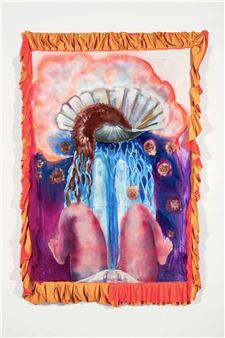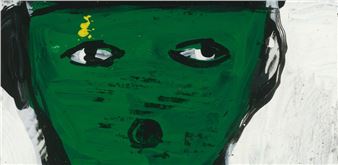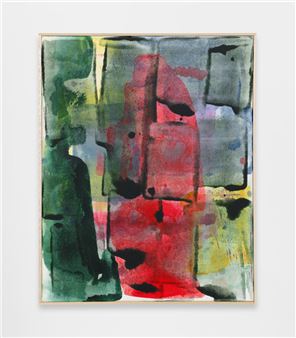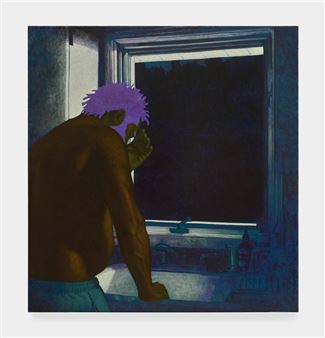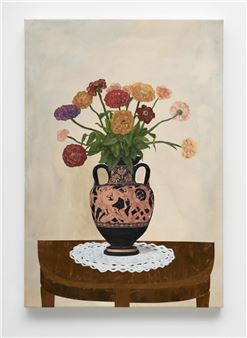The Tyranny of Distance
Taking place simultaneously at Tin Flats in Los Angeles and ESBA TALM in Angers, separated by more than 5614.73 miles (9,036.04 kms), this exhibition explores the various constraints and possibilities posed by distance and the necessary translations that separation implies. This distance separating two geographical, cultural, climatic, historical and linguistic contexts engages the experience of the limits of translation, of the relationship to the other. The impossibility of “being everywhere at every time” or to “make one with someone else” can be felt as hardships. Wanting to “touch at a distance” generates a belief in the possibility of a “language of communication” that, ideally, would not be limited by the burdens of the body and the contexts of enunciation. Indeed, the wish for telepathy, teleplasty and ubiquity lies behind every modern technological invention to establish distant connections (the telegraph, the telephone, phonograph, radio, cinema, television, Internet, Skype, holograms…). These always more efficient tools are far from being ideologically neutral and materially transparent. They require to be experienced and analyzed through a politics of translation concerning their uses and the fantasies they materialize.
Also, the complex and embodied processes of translation entail the very possibility of considering the other and the reality of specific places in their singularity. Missing parts, gaps, resistances and inadequacies between people, places or languages can either be considered as losses or rather as sites for inquiry to be thought and experienced through an ethics of translation. The embodied practice of the translator (situated in terms of culture, language, gender, « race » and class) also needs to be considered when engaging with a text/object “at a distance”. Translation thus becomes a metaphor and an ethos for the very possibility of difference.
Artists in each of the sites will produce works questioning these translation issues between one language and another, one medium and another, one place and another, one body and another. The exhibition will emphasize the processes and experimentations of a community of translators, “translating” both within and between the two contexts. The works that will be developed in Angers and Los Angeles will involve repeated or evolving acts of translation, supplementation and dissemination.
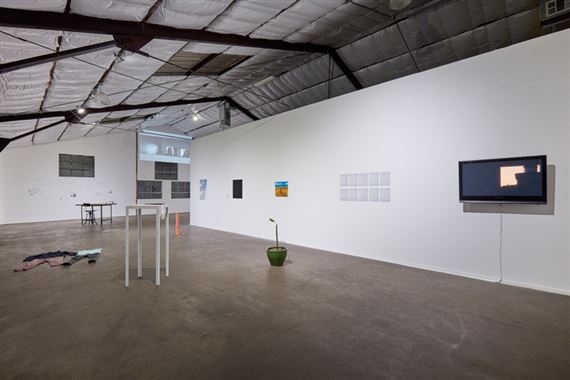
Recommended for you
Taking place simultaneously at Tin Flats in Los Angeles and ESBA TALM in Angers, separated by more than 5614.73 miles (9,036.04 kms), this exhibition explores the various constraints and possibilities posed by distance and the necessary translations that separation implies. This distance separating two geographical, cultural, climatic, historical and linguistic contexts engages the experience of the limits of translation, of the relationship to the other. The impossibility of “being everywhere at every time” or to “make one with someone else” can be felt as hardships. Wanting to “touch at a distance” generates a belief in the possibility of a “language of communication” that, ideally, would not be limited by the burdens of the body and the contexts of enunciation. Indeed, the wish for telepathy, teleplasty and ubiquity lies behind every modern technological invention to establish distant connections (the telegraph, the telephone, phonograph, radio, cinema, television, Internet, Skype, holograms…). These always more efficient tools are far from being ideologically neutral and materially transparent. They require to be experienced and analyzed through a politics of translation concerning their uses and the fantasies they materialize.
Also, the complex and embodied processes of translation entail the very possibility of considering the other and the reality of specific places in their singularity. Missing parts, gaps, resistances and inadequacies between people, places or languages can either be considered as losses or rather as sites for inquiry to be thought and experienced through an ethics of translation. The embodied practice of the translator (situated in terms of culture, language, gender, « race » and class) also needs to be considered when engaging with a text/object “at a distance”. Translation thus becomes a metaphor and an ethos for the very possibility of difference.
Artists in each of the sites will produce works questioning these translation issues between one language and another, one medium and another, one place and another, one body and another. The exhibition will emphasize the processes and experimentations of a community of translators, “translating” both within and between the two contexts. The works that will be developed in Angers and Los Angeles will involve repeated or evolving acts of translation, supplementation and dissemination.
Contact details


 ARTISTS
ARTISTS










